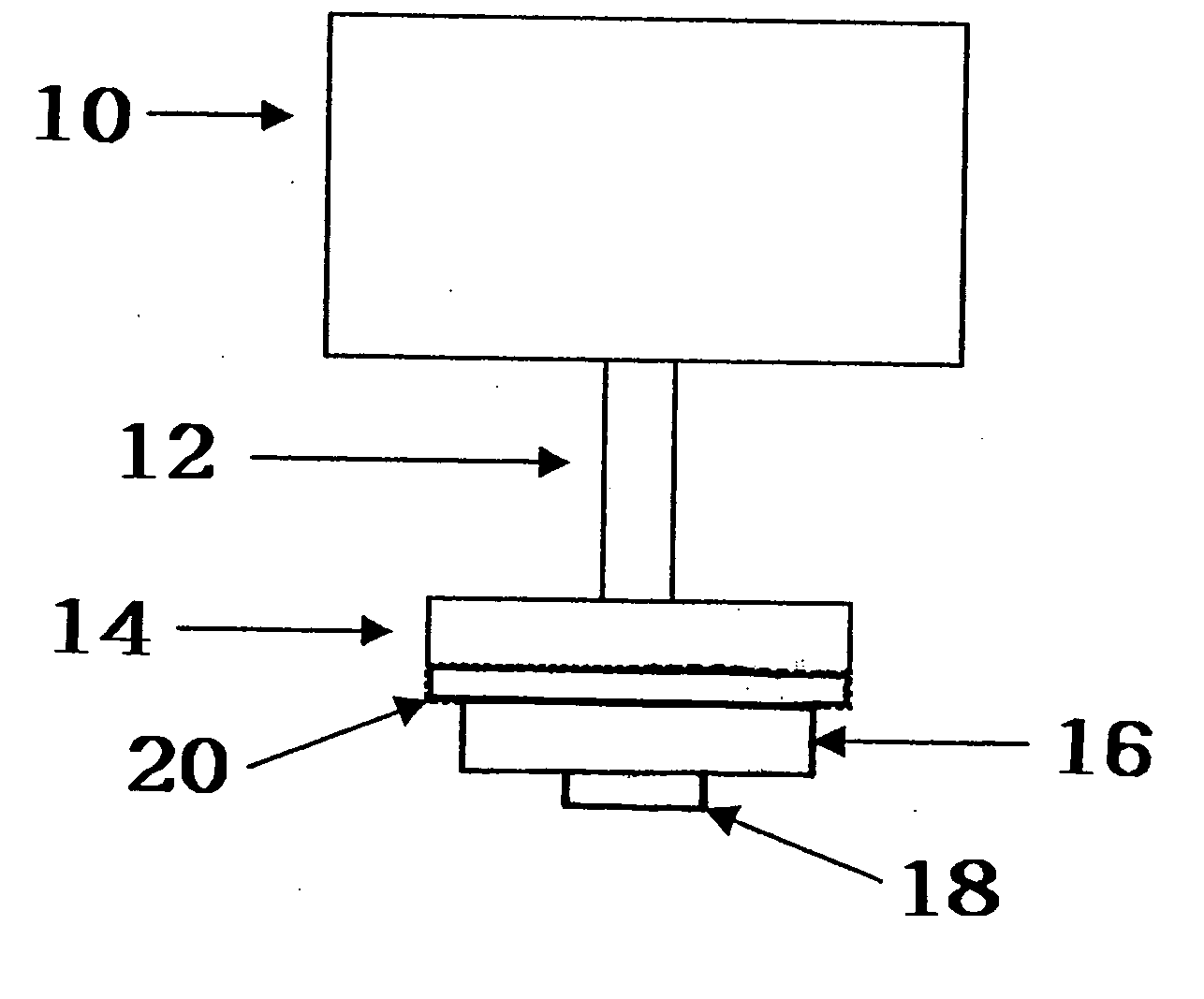Label applicator with RFID antenna
- Summary
- Abstract
- Description
- Claims
- Application Information
AI Technical Summary
Benefits of technology
Problems solved by technology
Method used
Image
Examples
Embodiment Construction
[0017] Radio frequency transponders (also known as “RFID tags”) generally include an antenna and integrated memory circuit with read / write capability used to store digital information, such as an electrically erasable programmable read only memory (EEPROM) or similar electronic device. Active RFID tags include their own radio transceiver and power source (battery) and are generally sealed within a molded plastic housing or “button”. Passive RFID tags are energized to transmit and receive data by an electromagnetic field and do not include a radio transceiver or power source. As a result they are small and inexpensive with limited range, resolution, and data storage capacity.
[0018] Passive RFID tag “inserts” used in the Automatic Identification Industry are typically laminated or inserted into a paper or plastic label stock backed with pressure sensitive adhesive for applying the printed label to a carton, pallet, airline baggage, parcel, or the other article to be tracked. These la...
PUM
 Login to View More
Login to View More Abstract
Description
Claims
Application Information
 Login to View More
Login to View More - R&D
- Intellectual Property
- Life Sciences
- Materials
- Tech Scout
- Unparalleled Data Quality
- Higher Quality Content
- 60% Fewer Hallucinations
Browse by: Latest US Patents, China's latest patents, Technical Efficacy Thesaurus, Application Domain, Technology Topic, Popular Technical Reports.
© 2025 PatSnap. All rights reserved.Legal|Privacy policy|Modern Slavery Act Transparency Statement|Sitemap|About US| Contact US: help@patsnap.com


